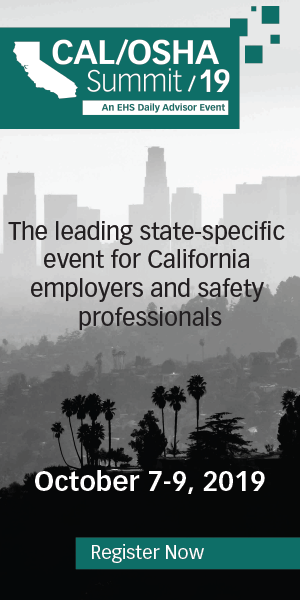California’s Division of Occupational Safety and Health (Cal/OSHA) is seeking an emergency regulation requiring employers in the state to protect both indoor and outdoor workers from wildfire smoke.

Cal/OSHA issued a proposed emergency regulation and will hold a public hearing May 8 in Oakland on the emergency rulemaking.
Rule Provisions
The rule would apply when the Air Quality Index (AQI) for PM-2.5—fine inhalable particles with diameters that are generally 2.5 micrometers and smaller—is greater than 150, regardless of the AQI for other pollutants, and:
- A wildfire smoke advisory has been issued by a local, regional, state, or federal government agency; or
- There is a realistic possibility that employees may be exposed to wildfire smoke.
Emergency response and wildfire firefighting operations would be exempt as would enclosed buildings and vehicles that effectively limit occupants’ exposure to smoke.
Employers would have to use engineering or administrative controls or, if feasible engineering and administrative controls are ineffective, provide respiratory protection equipment to control harmful smoke exposures. Employers would have to provide devices, such as N95 filtering face piece respirators approved by the National Institute for Occupational Safety and Health (NIOSH), that effectively protect wearers from PM-2.5.
Voluntary use of filtering face piece respirators does not require fit testing or medical evaluation.
When the AQI is 301 or greater, the assigned protection factor of provided respirators would have to ensure the concentration of PM-2.5 is reduced to an AQI of 150 or less.
Training Requirements
California employers also would be required to provide worker training under the emergency regulation. Components of training would have to cover:
- Health effects of wildfire smoke;
- The employer’s system of communications during a wildfire incident;
- The employees’ right to obtain medical treatment in the event of injury or illness without fear of reprisal;
- How employees can check the AQI at their location;
- Methods the employer plans to use to protect employees from wildfire smoke;
- Importance, limitations, and benefits of using a respirator when exposed to wildfire smoke;
- How to properly put on, use, and maintain respirators provided by the employer; and
- Procedures to follow if an emergency evacuation of a work area becomes necessary.
Emergency Rulemaking Process
California’s emergency rulemaking process has a brief public notice and public comment period followed by a review and decision by the state’s Office of Administrative Law (OAL). The OAL has 10 calendar days to review a proposed emergency regulation and make an approval decision.
If the OAL approves the proposal, the OAL files the emergency regulation with the secretary of State. The emergency regulation usually becomes effective as soon as the OAL files it with the secretary of State and remains effective for 180 days.
Agencies can then begin the regular rulemaking process or file for emergency readoption, which extends an emergency regulation an additional 90 days.
Only two emergency readoptions are permitted.
Looming Requirement
California employers could find themselves facing a new regulation before the end of May. Employers would have to quickly put engineering and administrative controls in place and acquire filtering face piece respirators for their workers. They also would need to organize and provide a training program.
Cal/OSHA’s advisory meeting on its emergency rulemaking will be at 10 a.m. PDT on May 8 at the Harris State Building, 1515 Clay Street, Second Floor, Room 1, Oakland, California.
Cal/OSHA 2019
To learn more about Cal/OSHA enforcement trends and strategies to stay in compliance, attend BLR’s upcoming Cal/OSHA Summit 2019.
The Cal/OSHA Summit, which will be held from October 7–9 in Los Angeles, is a leading state-specific event for California employers and safety professionals to get cutting-edge developments on new safety regulations, compliance strategies, and management tactics. Register now.


